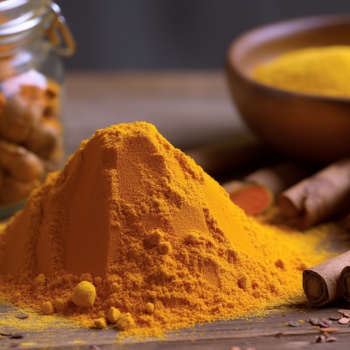The Golden Spice: A Closer Look at Turmeric

The Golden Spice: A Closer Look at Turmeric
Turmeric, often referred to as the “golden spice”, is a root that has been used in traditional medicine and cooking for thousands of years. It is native to India and Southeast Asia but has since spread to other parts of the world. In recent years, turmeric has gained popularity in Western culture for its potential health benefits. Let’s take a closer look at this ancient spice and all that it has to offer.
1. The Mysterious Origins of Turmeric: Unlocking Its Ancient Secrets
The use of turmeric can be traced all the way back to ancient India, where it was used as a medicinal herb and a staple in cooking. It was believed to have anti-inflammatory and antioxidant properties, making it a valuable resource for treating various ailments. In addition to its practical uses, turmeric also held significant cultural and religious significance in traditional Hindu practices.
Despite its long history, much of turmeric’s origins remain shrouded in mystery. Its exact time of domestication, for example, is not known, but it is believed to have been first cultivated around 4000 years ago in the Indus Valley. Over the centuries, turmeric’s use spread throughout the region, and it eventually became a valuable commodity traded along the Silk Road.
2. The Many Uses of Turmeric: From Culinary Delight to Medical Marvel
Turmeric’s unique flavor and health benefits have earned it a place in both the kitchen and the medicine cabinet. In cooking, it is often used to add a warm, earthy flavor to dishes, particularly in Indian and Southeast Asian cuisines. It can also be used as a natural food coloring, giving dishes a bright yellow-orange hue.
When it comes to health, turmeric has been found to have numerous potential benefits. It has been shown to have anti-inflammatory properties, which can help reduce symptoms of conditions like arthritis and inflammatory bowel disease. Turmeric’s active compound, curcumin, has also been shown to have antioxidant properties, which can help neutralize free radicals in the body and reduce the risk of chronic diseases like cancer.
3. The Science Behind Turmeric’s Healing Powers: Exploring Curcumin and Beyond
The active ingredient in turmeric, curcumin, has been the subject of much scientific study in recent years. Research has found that curcumin’s anti-inflammatory and antioxidant properties may be responsible for its potential health benefits. It has been shown to have potent anti-inflammatory effects, which can help reduce pain and swelling in the body.
Curcumin has also been found to have potential anti-cancer properties, with some studies suggesting that it may help slow the growth and spread of cancer cells. Additionally, it has been found to have neuroprotective properties, which may make it useful in the treatment of conditions like Alzheimer’s disease.
4. The Future of Turmeric: How This Golden Spice Continues to Fascinate and Inspire
As the scientific community continues to study turmeric and its active compounds, we are sure to discover even more potential benefits of this “golden spice”. In the meantime, turmeric’s popularity continues to grow, with more and more people incorporating it into their diets and supplement routines.
From its origins in ancient India to its current place on supermarket shelves around the world, turmeric is a fascinating and versatile spice that continues to intrigue and inspire. Whether you are looking to add more flavor to your favorite dishes or improve your overall health and wellness, turmeric may be just what you need.
Video
Here is an interesting video about the benefits of Turmeric:
Conclusion
Turmeric’s long history and numerous potential health benefits have made it a popular and fascinating subject of study. With its unique flavor and cultural significance, it is sure to continue to inspire and fascinate us for years to come. Whether you are a fan of Indian cuisine or looking to improve your health, turmeric may be just what you need.









10 Girl Beauty Tips & Secrets
7 Wildly Successful People Who Struggle with Mental Health
Magnet Satisfaction Extreme | Helps With Anxiety
Nikola Tesla Was Doing It Before Sleep! TRY IT TONIGHT!
How I climbed a 3,000-foot vertical cliff — without ropes | Alex Honnold